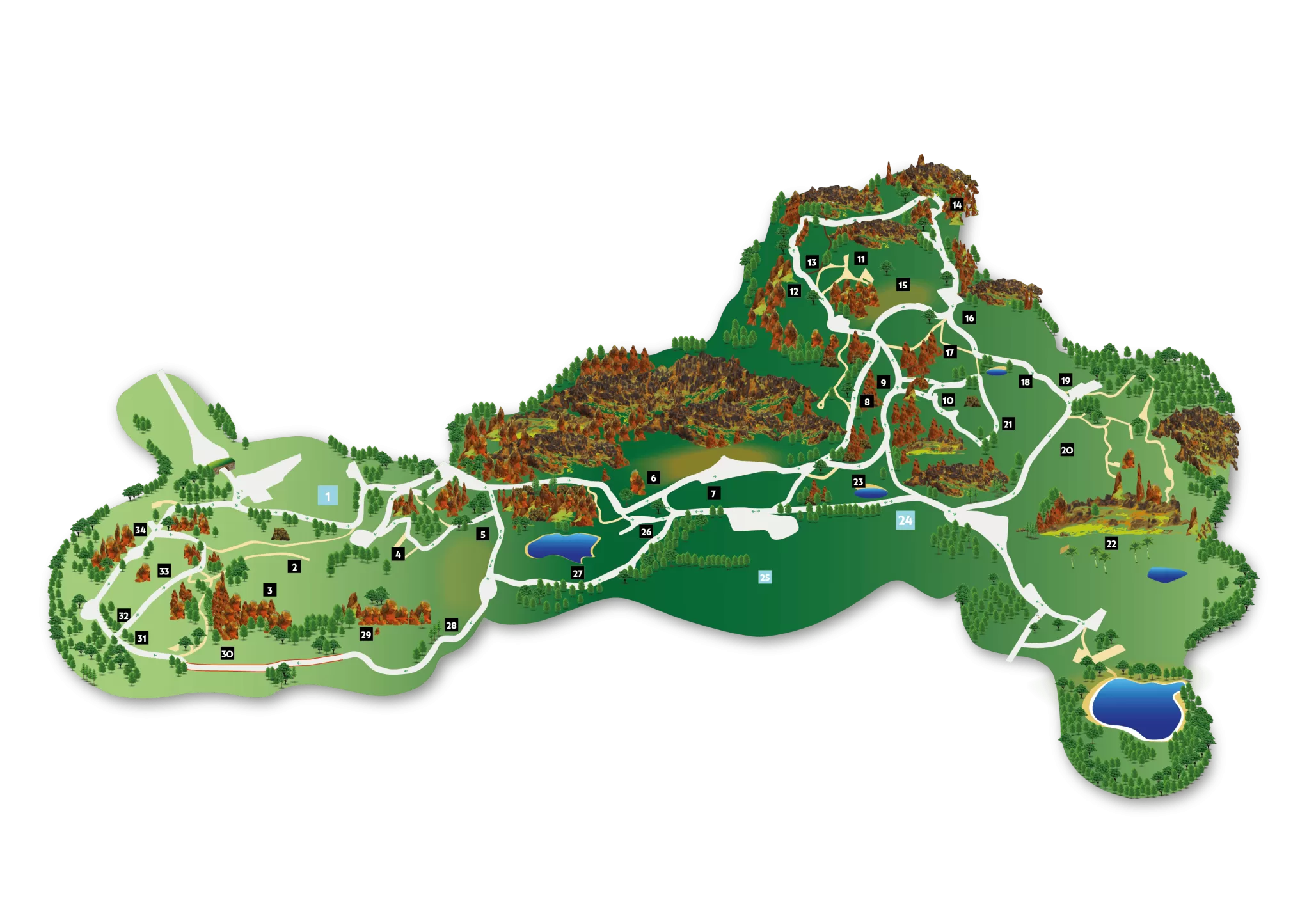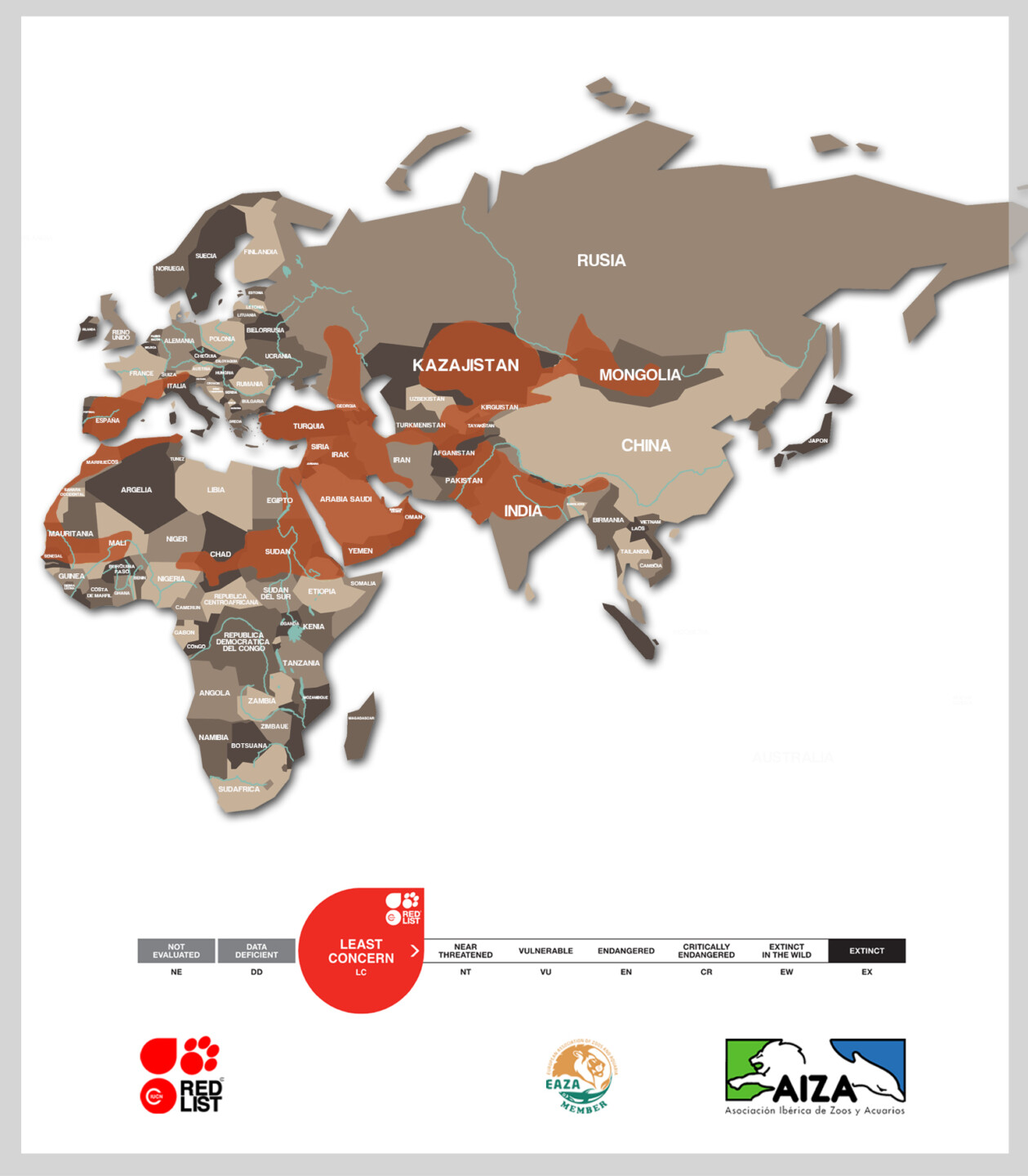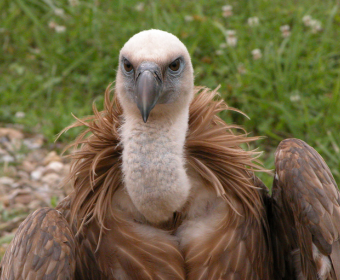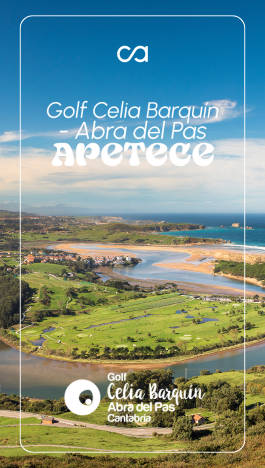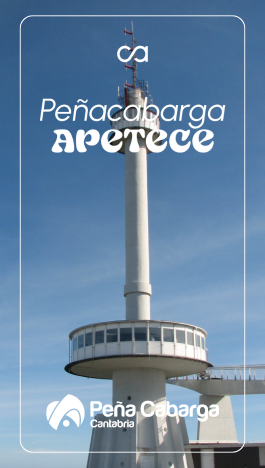
Its large wingspan, plumage with white and brown tones, long neck, short tail, and powerful beak for tearing muscles, tendons, and skin, are some of the morphological characteristics that distinguish the largest bird living in Cantabria.
Capable of gliding for hours without flapping its wings, solely by utilizing thermal currents, and soaring over tens of square kilometers in search of its prey. Once the remains are located, they circle around them, alerting their congeners flying nearby, so that in a short space of time, dozens of vultures can gather around the carcass. After some time soaring, one of them descends and approaches the carrion; subsequently, the rest of the vultures follow, beginning their feast.
Thanks to its diet, its ecological role is important, helping to prevent possible outbreaks of infectious diseases.

